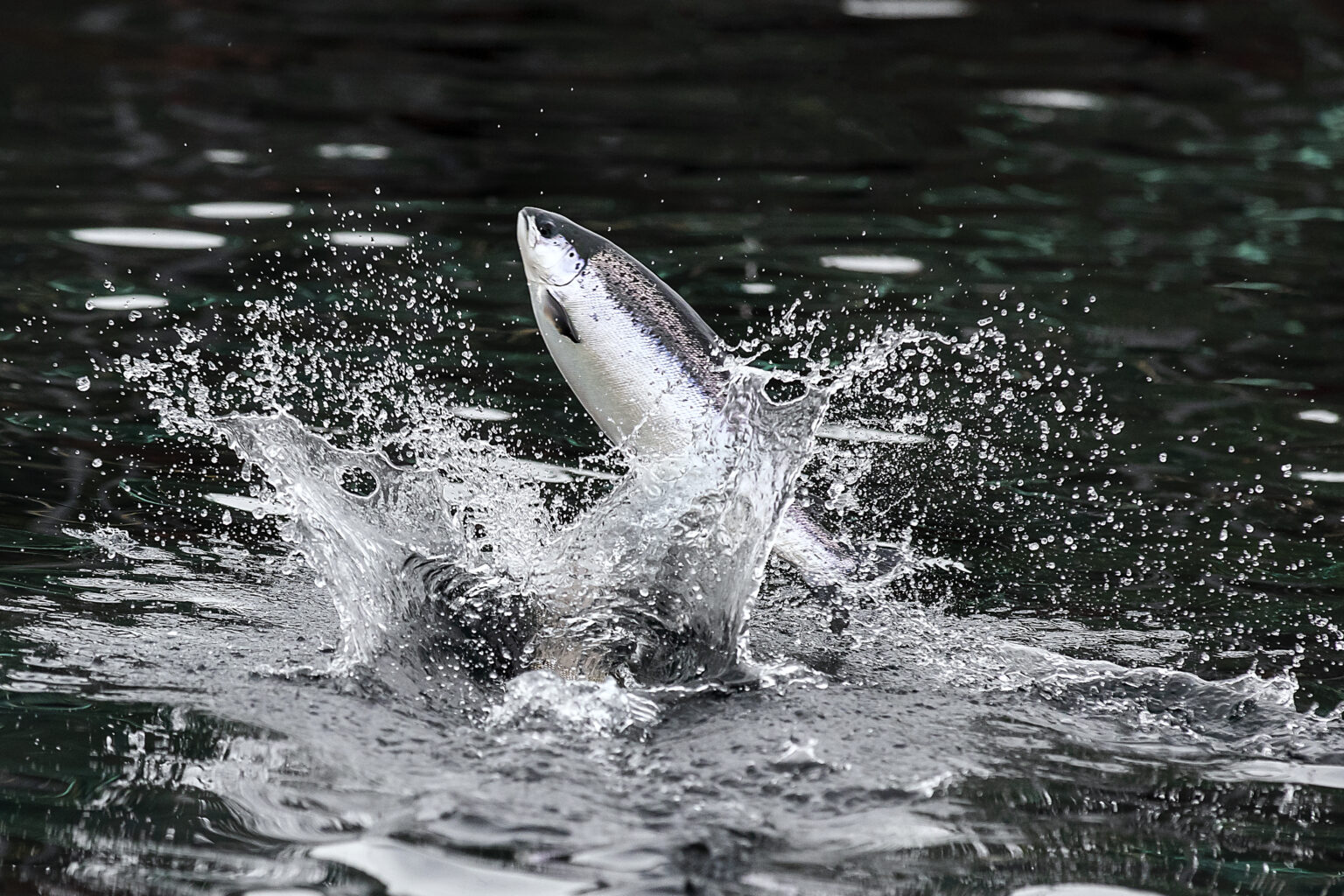A valuable tool
NewTechAqua is a major project funded by the European Union’s Horizon 2020 Research and Innovation programme. A part of this project, specifically Task 2.1, has been looking into a model for predicting numbers of salmon lice in different developmental stages one week ahead. The focus being on the volume of larvae, the infectious pressure. This has been carried out in collaboration with AquaCloud, IBM and the Norwegian Veterinary Institute.
To comply with Norwegian regulations, salmon farmers have to keep count on salmon lice and make sure that the numbers per fish do not increase beyond a specified threshold level.
This means that fish farmers (preferably) should apply control measures before lice abundance crosses the regulatory limit. In other words, this requires forecasting the number of lice at least a few days ahead.
Having a model which predicts the number of salmon lice would therefore be extremely valuable.
How does the model work?
The model developed in NewTechAqua is an improvement from an older model, the development being the use of data from fish farmers at a much higher granularity (detail rich) and volumes.
Current lice counts, as well as the previous-week, sea temperature, number, and mean weight of the fish, and presence and absence of wrasses as cleaner fish are the valuable input scientists are using to model this. Most of this data is gathered from the AquaCloud platform and enabled by fish farmers who deliver data to the platform.
In the NewTechAqua project they have created a statistical model aiming to determine the optimal way to use fish farm monitoring data from the AquaCloud system. These data are used to predict the number of sea lice at various stages in each cage on a farm, a week in advance. Having predictions for each individual cage is of high value for the farmer, because the assessment usually often involves an uncertainty in lice counts.
A unique aspect with the database from AquaCloud is the daily update of lice counts with actual data for the counting, as well as cage number and date of counting. Due to robust governance and managed access to dataset, data which normally cannot be shared on a public domain, is now available for the model. Key aspects of AquaCloud, like type of data, frequency of data retrieval and data suppliers, contribute to gain insights into the development of sea lice on cage level.
Further details of the model can be studied in a peer reviewed article early in 2024.
Findings
The more fish the better, or? One of the findings from the parameter estimates was that when the number of fish increased by 1000, the number of sessile lice decreased by about 0,3 %. On the other hand, as the average weight of the fish went up by 1 kg, the number of adult female lice increased by around 8%.
When it comes to survival rates for lice, about 71 out of every 100 sessile lice survived from one week to the next. For other motile lice, or mobile lice, about 93 of 100 lived in the same period. These rates indicate how many lice are able to survive from one week to another, under the typical conditions in a cage with 130,000 salmonid fish weighing around 2,3 kg and no wrasses.
In addition, one of the findings showed that more lice were predicted to grow into the next stage when the temperature was warmer compared to a colder environment.
Help reduce unnecessary measures
Insights derived from the predictive lice model are used to improve the functionality of Norwegian Veterinary Institute’s “lice calculator” web application. By applying the findings from the new lice predictive model into their calculator there’s a potential for significantly improving the accuracy and advantages offered by the lice calculator.
This model may serve as valuable decision support for fish farmers to time the use of lice control measures and avoid surpassing lice limits. Instead of having each farmer making subjective and experienced-based decisions, the model shows data-based insights.
Further, one can hope that the methodology developed may serve as a model for other farming nations in their quest to manage other parasites, improving their management practices and work for animal welfare in fish farming.
About the project

NewTechAqua has received funding from the European Union’s Horizon 2020 Research and Innovation programme under Grant Agreement n* 862658. It is a European project that aims at expanding and diversifying European aquaculture production of finfish, molluscs and microalgae by developing and validating technologically-advances, resilient and sustainable applications.
NCE Seafood Innovation, the Veterinary Insitute, IBM and AquaCloud have contributed into task 2.1 which is the improved lice predictor model in this article.
The lice model will be described in detail in a manuscript to be submitted for publication in a peer-reviewed scientific journal before Nov 1st. In addition, the insight from the model will be integrated to enhance the existing “lice calculator” web application (http://apps.vetinst.no/lusekalkulator/). This app will be designed to be user-friendly for the general public and will assist farmers in automatically predicting the expected number of lice for the upcoming week.
